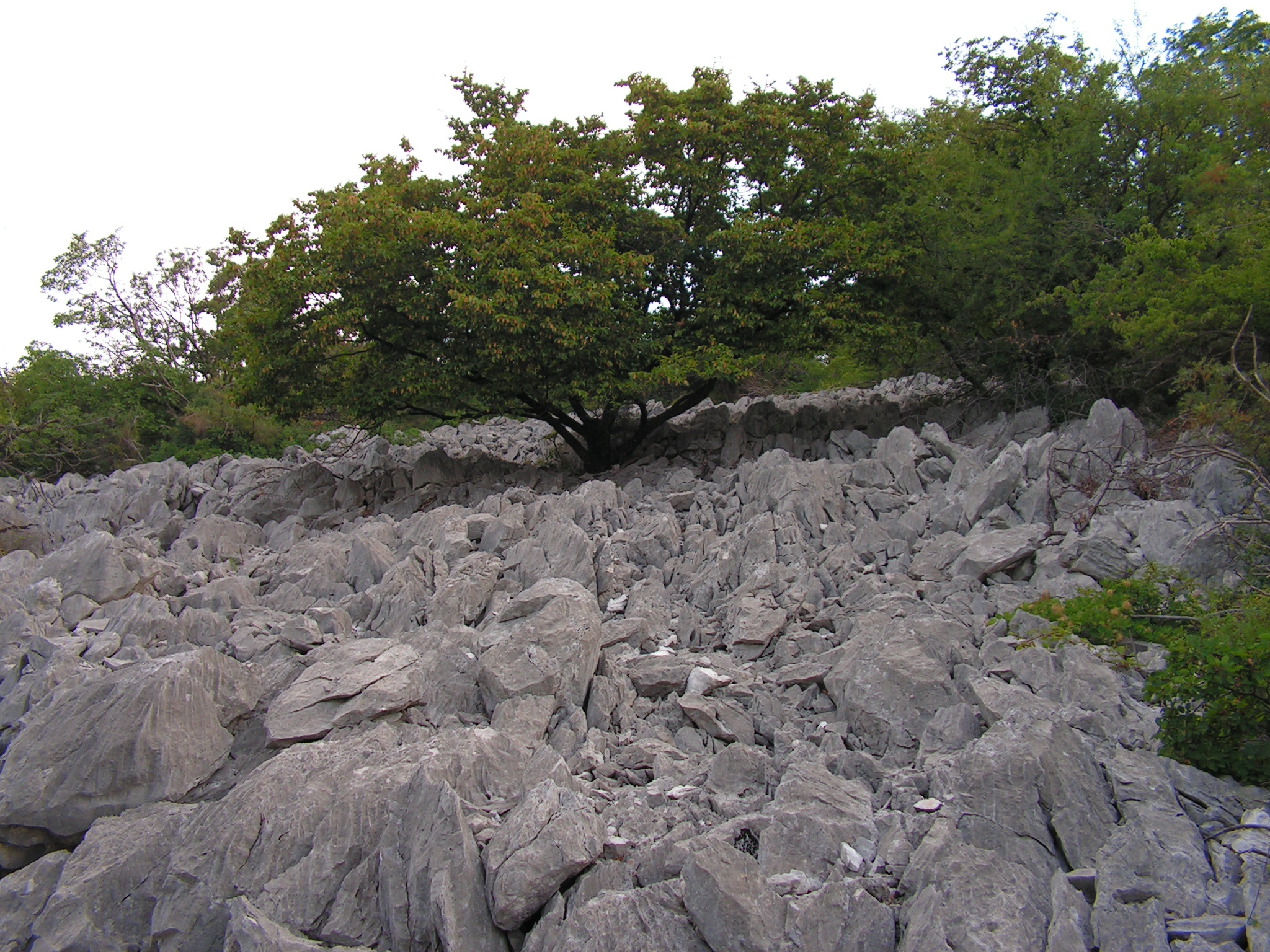Il Carso è un altipiano allungato in direzione SE– NW, leggermente in discesa verso occidente. La parte orientale presenta infatti un’altitudine di 400 m s.l.m., mentre l’area più prossima all’Isonzo si trova a circa 100 m s.l.m. L’altopiano carsico è formato dal calcare, una roccia composta da carbonato di calcio, che viene corrosa dall’acqua piovana, resa debolmente acida dall’anidride carbonica atmosferica. Questa azione chimica della pioggia prende il nome di “dissoluzione” ed è responsabile delle forme spettacolari che sono note in tutto il mondo come “fenomeni carsici”. Il termine “carsismo” deve il suo nome proprio al Carso triestino in quanto è stata la prima area dove gli studiosi di tutto il mondo hanno analizzato tale fenomeno geologico. Il paesaggio carsico quindi si contraddistingue dalla mancanza di idrografia superficiale in quanto l’acqua si infiltra attraverso le fessurazioni del calcare e viene raccolta sottoterra. Tipiche forme del carsismo sono le doline, le grotte e gli abissi, mentre tra i micro-fenomeni superficiali ricordiamo le scannellature, i fori e le vaschette di corrosione.

